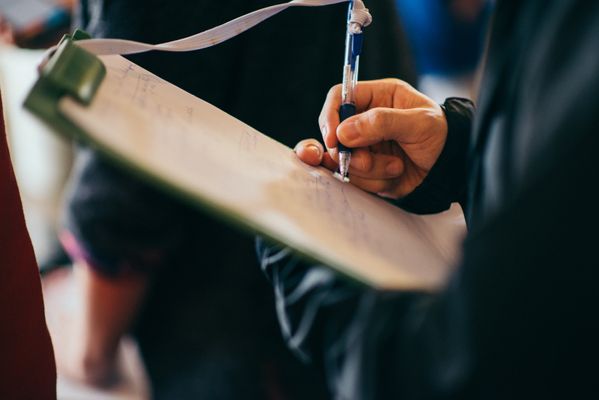1.2.1
Types of Data
Quantitative and Qualitative Methods of Research
Quantitative and Qualitative Methods of Research
Social research can be conducted for a number of purposes, and it is these reasons that influence the choice of methods used.


Type of research
Type of research
- Social research can be conducted for a number of purposes and these reasons influence the choice of methods used.
- Some methods require the use of experiments to test a hypothesis (resulting in quantitative data) while those used to develop new theories often involve researchers observing social life (where the data is usually qualitative).
- Researchers may also use primary or secondary data, or a combination of the two.


Methodology
Methodology
- Methodology refers to the methods researchers use to collect data, as well as the philosophy underlying the production of sociological data.


Quantitative data
Quantitative data
- Quantitative data consists of data in numerical form.
- For example, the number of females and males passing an exam.


Qualitative data
Qualitative data
- Qualitative data is any data that is not numerical.
- Such as written description (filed notes), diary entries, photographs, recorded music or radio programmes.


Primary sources
Primary sources
- Qualitative and quantitative data can both be gathered from primary and secondary sources.
- Primary sources are those sources of data that are produced directly by a sociologist conducting research.
- Such as the results of experiments or the answers obtained from questionnaires and interviews.


Secondary sources
Secondary sources
- Secondary sources consist of existing data produced by someone else.
- For example government statistics, or the results of an experiment conducted by another researcher.
Methodological Pluralism and Triangulation
Methodological Pluralism and Triangulation
In the real world, many researchers will use a range of methods to collect different types of data, regardless of whether they are qualitative or quantitative.


Methodological pluralism
Methodological pluralism
- Methodological pluralism refers to the use of a variety of methods and types of data in a single research study.


Triangulation
Triangulation
- Triangulation refers to the use of a variety of methods and different types of data to cross-check that the results obtained by one particular method are valid, and reliable.
- This might include using qualitative unstructured interviews to check against responses to a quantitative survey.
1Theory & Methods
1.1Sociological Theories
1.2Sociological Methods
2Education with Methods in Context
2.1Role & Function of the Education System
2.2Educational Achievement
2.3Relationships & Processes Within Schools
3Option 1: Culture & Identity
3.1Conceptions of Culture
3.2Identity & Socialisation
3.3Social Identity
3.4Production, Consumption & Globalisation
4Option 1: Families & Households
4.1Families & Households
4.2Changing Patterns
4.3The Symmetrical Family
4.4Children & Childhood
5Option 1: Health
5.1Social Constructions
5.2Social Distribution of Healthcare
5.3Provision & Access to Healthcare
5.4Mental Health
6Option 1: Work, Poverty & Welfare
6.1Poverty & Wealth
7Option 2: Beliefs in Society
7.1Ideology, Science & Religion
7.2Religious Movements
7.3Society & Religion
8Option 2: Global Development
8.1Development, Underdevelopment & Global Inequality
8.2Globalisation & Global Organisations
8.3Aid, Trade, Industrialisation, Urbanisation
9Option 2: The Media
9.1Contemporary Media
9.2Media Representations
10Crime & Deviance
10.1Crime & Society
10.2Social Distribution of Crime
Jump to other topics
1Theory & Methods
1.1Sociological Theories
1.2Sociological Methods
2Education with Methods in Context
2.1Role & Function of the Education System
2.2Educational Achievement
2.3Relationships & Processes Within Schools
3Option 1: Culture & Identity
3.1Conceptions of Culture
3.2Identity & Socialisation
3.3Social Identity
3.4Production, Consumption & Globalisation
4Option 1: Families & Households
4.1Families & Households
4.2Changing Patterns
4.3The Symmetrical Family
4.4Children & Childhood
5Option 1: Health
5.1Social Constructions
5.2Social Distribution of Healthcare
5.3Provision & Access to Healthcare
5.4Mental Health
6Option 1: Work, Poverty & Welfare
6.1Poverty & Wealth
7Option 2: Beliefs in Society
7.1Ideology, Science & Religion
7.2Religious Movements
7.3Society & Religion
8Option 2: Global Development
8.1Development, Underdevelopment & Global Inequality
8.2Globalisation & Global Organisations
8.3Aid, Trade, Industrialisation, Urbanisation
9Option 2: The Media
9.1Contemporary Media
9.2Media Representations
10Crime & Deviance
10.1Crime & Society
10.2Social Distribution of Crime
Unlock your full potential with Seneca Premium
Unlimited access to 10,000+ open-ended exam questions
Mini-mock exams based on your study history
Unlock 800+ premium courses & e-books